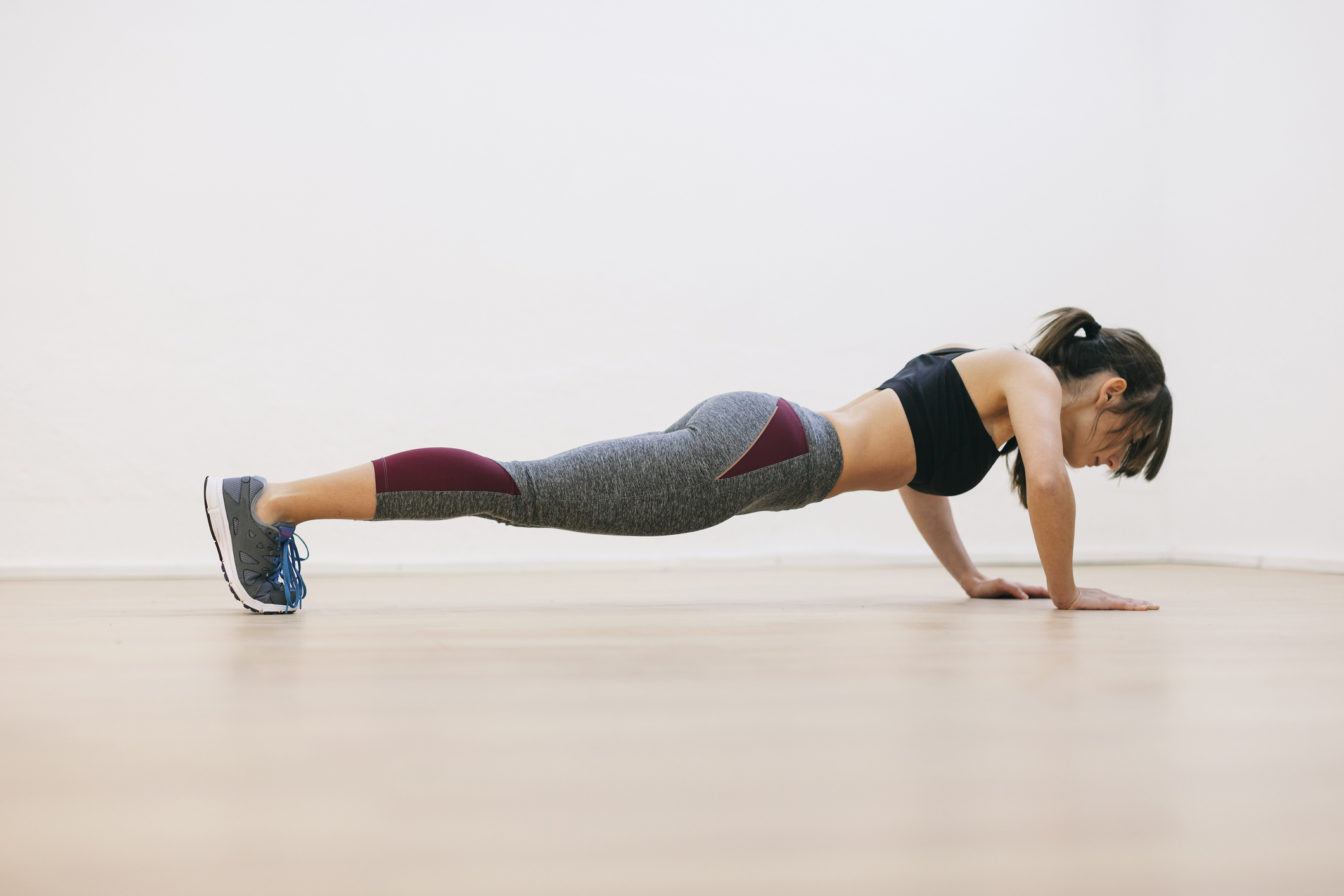
Think you know push-ups? Think again. From heart health to bone density, there are lots of health benefits of push-ups that you may not be aware of.
Push-ups are a bread-and-butter exercise if we’ve ever heard of one. They’ve been a symbol of fitness for a seriously long time and they’re still one of the very first workouts that children are introduced to. And it’s easy to understand why. They’re relatively simple to do—albeit difficult to master—and boast a litany of potential benefits that few other exercises can match. Read on to discover some of the most impressive benefits of push-ups. Just remember to talk to your doctor before you make any changes to your workout regimen.
1. Push-ups may contribute to good heart health
According to a recent study from JAMA Network Open, push-ups may be an excellent way of boosting your heart health. Testing the stamina of middle-aged firefighters, the study found that—compared to men who could not do more than 10 push-ups—those who were able to do over 40 push-ups had a 96% lower risk of experiencing heart disease or other heart complications across a 10-year period. That’s substantial, and it implies that push-ups could be an enormous boon for your cardiovascular health.
2. Push-ups may enable you to build your core, back, and upper body
One of the most significant health benefits of push-ups is the fact that they’re an excellent way to build strength in your upper body, providing a solid workout for your shoulders, pectoral muscles, and triceps. However, when completed with proper form, push-ups can also strengthen other, perhaps surprising areas of your body. Push-ups can be a good way of engaging your back muscles, which can boost your flexibility, help prevent injuries, and improve your posture. It’s also a solid way to stretch your biceps and increase muscle density in your core.
3. Push-ups may allow you to target multiple muscle groups
Another great benefit of push-ups is that they are what’s known as a compound exercise, meaning that they stimulate multiple muscle groups in one relatively straightforward movement. Simply put, it’s a full-body workout that may help you to build a significant amount of strength all over your body relatively quickly, engaging muscle groups from top to bottom. From your shoulders and chest to your back and legs—yep, even they’re getting in on the action—you really get your money’s worth with push-ups!
4. Push-ups may help to strengthen your bones
Because push-ups are a weight-bearing exercise, they can be an excellent way of building up your bone density, particularly in your upper body. Basically, the more weight that you place on your bones, the stronger they’re likely to get. Not only does this increase your overall strength, but it can help to prevent degenerative bone diseases like osteoporosis, which become more of a risk as you get older.
5. Push-ups can be modified to suit your exact needs
Everyone knows what a push-up is, right? Hands shoulder-width apart, back straight, butt clenched, yadda yadda yadda. Well, that’s not strictly true, because there are a ton of cool push-up variations that you can use to target different muscle groups or raise/lower the intensity of your workout. For example, a study from the Journal of Physical Therapy Science found that when performing a push-up, your chest muscle activity is greater when your hands are closer to your body, rather than in a wide position. And there a many more drastic variations that you can explore. Check out some of the best modifications to a standard push-up in this article from SELF.
Drawbacks of push-ups
As you can probably tell, we’re very much on the push-up bandwagon. But that doesn’t mean that this simple exercise doesn’t have its fair share of downsides. First off, there’s the potential risk of overtraining. If you perform too many push-ups without rest, you could experience exhaustion, an increased resting heart rate, muscle/joint soreness, and a plateau in strength training.
There’s also a chance that you’ll pick up an injury if you perform the exercise incorrectly. This can happen after your muscles fatigue and you overload your tendons and ligaments. Finally, it’s important to remember that if your goal is muscle strength, push-ups alone won’t do it. You need to vary your workouts; otherwise, your body will adjust and your muscles will stop responding.
Bottom line
There are wide-ranging health benefits of push-ups, and it seems fairly clear that for such a straightforward exercise, they pack a mighty punch. Oh, and since they’re so low-tech, you don’t even need to go to a gym to get started! So, what are you waiting for? Drop and give us 20!



